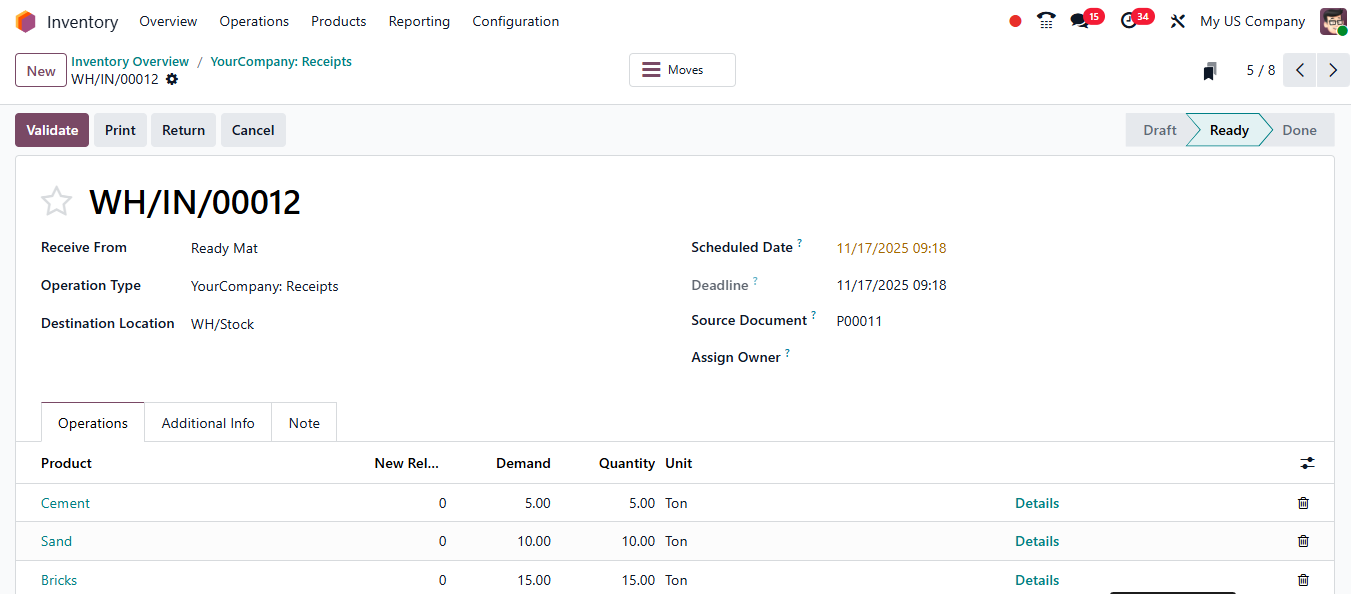Warehouse management is critical to the success of the retail industry
Commercial companies, particularly in the retail sector, have a set of basic pillars that promote sector success and balance supply and demand. One of these elements is warehouse management and inventory tracking, which requires continuous monitoring to ensure the continuity of the sales process.
When business managers can precisely track inventory, it improves the consumer experience by ensuring that products are always available. Organizing warehouse routes also encourages timely shipments.
To reduce inventory waste, you may need a good distribution of spaces and develop strategies for withdrawing and storing products, such as FIFO or LIFO, according to business needs and best-selling products, while setting inventory policies that keep you on a comprehensive follow-up of inventory flow processes, but business owners always need a lot of time to follow up on these processes at the level of all warehouses in addition to operational operations.
The use of modern technological methods in inventory management represents a significant advancement in business management, including ERP systems that provide a comprehensive view of all the organization's warehouses, shipment routing, inventory movement monitoring, and staff across all department levels.
8 challenges you may face in inventory stocking and tracking operations.
Inventory management is an exhausting task that requires continuous and precise monitoring. Data can negatively impact results and information. Data can have a detrimental effect on information and results, which could make it more difficult to create business plans that work. These are the top 8 typical inventory management issues that need your attention.
- Product classification: Difficulty in organizing products in a way that makes them easy to access and track.
- Managing waste: Reducing losses and disposing of damaged items effectively
- Demand forecasting: Poor estimation of the required quantities, which leads to surplus or shortage.
- Branch monitoring: Difficulty in unifying and managing multiple warehouse operations from a central location.
- Human errors: the possibility of mistakes in recording invoices and inventory.
- Managing shipping operations: Difficulty in tracking shipments to ensure they arrive on time.
- Sudden stock shortages: Unexpected depletion disrupts sales and production activities.
- Obstacles in the shipping and supply chain: Delays or issues in supply affect the continuity of availability.
Effective inventory management on Odoo 18
- Odoo ERP is one of the strongest enterprise resource planning systems, supporting professional inventory management and precise inventory tracking. Odoo 18 allows real-time inventory updates, enabling you to identify excess and shortages in products.
One of the most important features of the system in its recent updates:
Improving the development opportunity: demand forecasting and automatic system integration with the purchasing application, and determining appropriate reorder levels.
Reducing waste: By analyzing inventory movement, stagnant goods can be identified and unnecessary purchases avoided.
Integration with sales: Inventory is automatically updated with every sale or purchase, ensuring data accuracy.
Integration with manufacturing: Managing raw materials and their availability in warehouses and production lines until the final product reaches the sales stage.

Inventory and logistics management.
- Odoo provides automatic inventory updates, real-time inventory tracking, and effective warehouse management, reducing stockouts and enhancing overall warehouse efficiency. It allows you to monitor inventory levels, ensure product availability, efficiently locate inventory, and improve the organization of shipping and distribution processes.
- You can manage the packaging and wrapping operations for inventory and manage reverse logistics services, including handling damaged goods and expired inventory, as well as managing returns, customer complaints, and exchanges to achieve customer satisfaction and improve the quality of production and sales.
Integration of inventory with other applications.
The warehouse module on Odoo is distinguished by its integration with various internal system applications, including sales, warehouses, online store, and purchases, or external applications such as e-commerce applications like Shopify, QuickBooks, and similar applications that support online sales, payment gateways, and social media.
Summary:
Why is Odoo ERP considered the best for managing your business's warehouses? Because it offers you the simplest solutions and an effective, integrated management system, starting from purchase orders from suppliers and tracking the movement of products within the warehouses to delivering them to the customer, ensuring successful sales operations, and achieving customer satisfaction.

